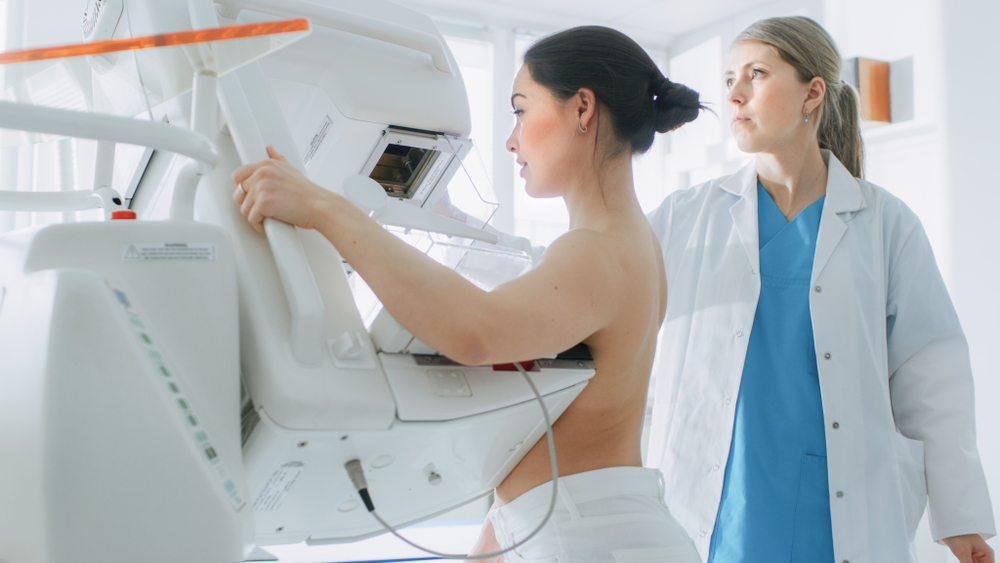Breast cancer is, unfortunately, a reality that many women have to be aware of, and take preventative measures against. This is especially true for women with family histories of breast cancer. According to breastcancer.org, about 1 in 8 women (12%) will develop breast cancer over the course of their lifetime. Breast cancer is also the most commonly diagnosed cancer among women.
Let’s dig into some more information regarding what every woman should know about breast cancer:
What is Breast Cancer?
Just like other cancers, breast cancer is a disease when cells in the breast begin growing out of control and form abnormal growths. With breast cancer, most start in breast ducts or lobules, and in some cases the breast tissue. Like other cancers, breast cancer can spread to other parts of the body via blood and lymph vessels.
Types of Breast Cancer
These are the main types of cancer and their subtypes.
- Non-invasive: breast cancer that stays within the milk ducts or lobules in the breast and does not spread or grow beyond that.
- Ductal Carcinoma in Situ (DCIS): cancer that starts and stays within the milk ducts.
- Lobular Carcinoma in Situ (LCIS): This is not technically cancer, but grows within the lobule, and indicates a greater risk for invasive cancer. A warning sign, if you will.
- Invasive: Cancer that has spread to outer tissue from ducts and lobules and has the ability to spread further to breast tissue and other parts of the body. This is the most common type of cancer.
- Invasive Ductal Carcinoma (IDC): This is the most common type of breast cancer, making up about 80% of all cases. It starts in the milk ducts, lobules and/or breast tissue and may either remain localized or spread to other areas of the body.
- Invasive Lobular Carcinoma (ILC): This accounts for around 10% of breast cancers; it begins in the lobules or milk glands and then spreads.
- Inflammatory Breast Cancer (IBC): This accounts for about 1% of all breast cancers. It is a very rare but aggressive form of breast cancer that grows and spreads quickly, becoming worse in just a matter of days.
- Male Breast Cancer: Extremely rare, this breast cancer accounts for less than 1% of all breast cancers. Breast cancer can happen in men who have breast tissue due to high levels of estrogen in their body, either naturally or from hormonal medicines/injections.
- Metastatic Breast Cancer: Also known as stage IV cancer, this type of cancer is when the cancer cells have broken away from the breast and spread to other regions of the body.
- Paget’s Disease of the Nipple: This is an extremely rare form of cancer that grows in or around the nipple, starting in the ducts close to the nipple and spreading outward. This causes redness, itchiness, and irritation to the outer nipple and some discoloration. It accounts for less than 5% of all breast cancer.
- Phyllodes Tumors of the Breast: These are tumors that are typically benign (noncancerous) but can also be malignant (cancerous) or somewhere in between. They grow quickly and require surgery for removal.
Signs of Breast Cancer
There is a range of signs to look out for to know whether or not you have breast cancer. Some common signs and symptoms include:
- An area of thickened tissue around the breast.
- A lump in the breast or armpit.
- Unusual pain or tenderness in the breast and/or armpits.
- Redness and/or irritation of breast skin and nipples.
- Unusual discharge from the nipple.
- A rash on the breast.
- A sudden change in the size or shape of the breast.
- Skin dryness and flaking in the breast area.
- Change in nipple shape or inverted nipple.
Breast Cancer Stages
There are four stages of breast cancer:
Stage 0
Cancers that are non-invasive, such as DCIS as mentioned above. Stage 0 is when there is no indication of cancer cells spreading to other parts of the breast.
Stage I
Cancer that is invasive, and divides into two categories, Stage IA and IB:
- Stage IA: Invasive cancer tumor that measures up to 2cm and has not spread outside the breast
- Stage IB: Either an invasive small group of cancer cells or tumor between 0.2 mm and 2 mm that have been found in the lymph nodes.
Stage II
Invasive breast cancer divided into two categories:
- Stage IIA: Can be one of the following:
- Cancer cells large than 2 mm are found in 1-3 axillary lymph nodes close to the breast.
- A tumor 2 cm or smaller has spread to axillary lymph nodes.
- A tumor that is between 2 and 5 cm exists but has not spread to lymph nodes.
- Stage IIB: Can be one of the following:
- Either a small group of cancer cells between 0.2 mm and 2 mm or a tumor between 2 and 5 cm that is found in the lymph nodes.
- A tumor is between 2 and 5 cm and has spread to 1-3 axillary lymph nodes.
- The tumor is larger than 5 cm but has not spread to axillary lymph nodes.
Stage III
Invasive breast cancer divided into three categories:
- Stage IIIA: Can be one of the following:
- There is either a tumor of any size or no tumor, and the cancer is found in 4-9 axillary lymph nodes near the breast.
- Can be either a tumor larger than 5 cm or a group of cancer cells between 0.2 mm and 2 mm that are found in the lymph nodes.
- A tumor that is larger than 5 cm and has spread to 1-3 axillary lymph nodes
- Stage IIIB: can be one of a combination of the following:
- A tumor of any size that has spread to the larger chest area and/or skin of the breast, causing swelling or an ulcer.
- Has spread to up to 9 axillary lymph nodes.
- Has spread to lymph nodes near the breast.
- Stage IIIC: invasive cancer where one or more of the following have occurred:
- There is either a tumor or no sign of cancer in the breast that has spread to the chest and/or breast skin.
- Has spread to 10 or more axillary lymph nodes or has spread to lymph nodes above and/or below the collarbone.
- Has spread to axillary lymph nodes or lymph nodes near the breast bone.
Stage IV
Cancer where the cells have spread outside of the breast/chest area into other organs and parts of the body, such as lungs, skin, bones, or other parts of the body. This is typically the “metastatic” or “advanced” cancer.
Preventative measures
It’s tough to face the realities of breast cancer, as it’s not exactly a subject people are eager to talk about. However, being aware of how prevalent breast cancer is and making sure that you are conscious enough about it to take preventative measures is incredibly important. Here are some preventative measures you can take against breast cancer and/or detect it as early as possible:
Healthy lifestyle
Maintaining a healthy lifestyle is important in working to prevent any type of cancer, and breast cancer is no different. Cutting down on junk food and eating fresh foods, particularly lots of fruits and vegetables is highly advised. Exercise regularly, don’t smoke and limit your alcohol intake.
Breast Self-Exams
Once a month women should conduct breast self-exams. This process helps women to become more aware and familiar with how their breasts feel so they can more quickly notice if there is anything unusual the comes up.
Clinical exams
During annual physicals with your primary care doctor or during appointments with the gynecologist, they will check your breasts for any abnormalities, which is important in detecting breast cancer early.
Mammogram
A mammogram is an x-ray picture of the breast and it is typically recommended that you go for a mammogram at age 40, unless your doctor recommends otherwise (example: a mammogram will be recommended at an earlier age if you are deemed to be at higher risk of developing breast cancer). You can learn more in-depth information about mammograms here.
At MagView, we pride ourselves on providing premier breast imaging tracking solutions for facilities around the country. Check out our services and products today.
Treatment
Treating breast cancer depends heavily on what type of cancer the person has and also how advanced it is (i.e. stage I, II, or III, etc.). Medication is commonly used to try and treat breast cancer and/or side effects of other treatment as well as hormone therapies to block any further growth for cancer cells or tumors.
Eliminating or reducing cancer found in the body can range from surgery in the form of lumpectomy or mastectomy. Lymph node removal may also happen in order to remove cancer.
Medical professionals may also decide to do radiation therapy or chemotherapy to try and eliminate as much of the breast cancer as possible, if not completely, before or after operating via surgery.
You can read more in-depth information on how breast cancer can be treated here.
We hope this article has been helpful in covering what every woman should know about breast cancer. You can seek further resources on our blog or contact us today about our products and services, or for general inquiries.

















![monitoring breast density shutterstock_1299510538-[Converted]](https://magview.com/wp-content/uploads/2023/05/shutterstock_1299510538-Converted.jpg)






























